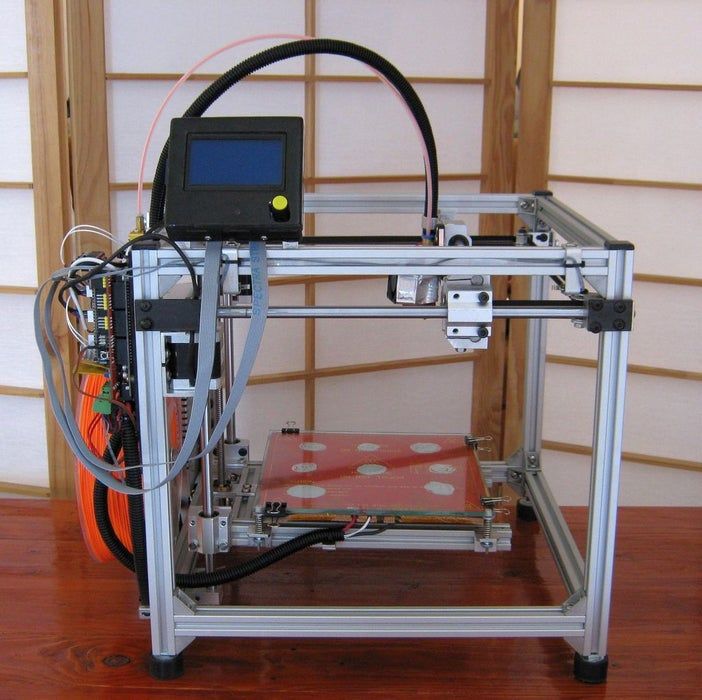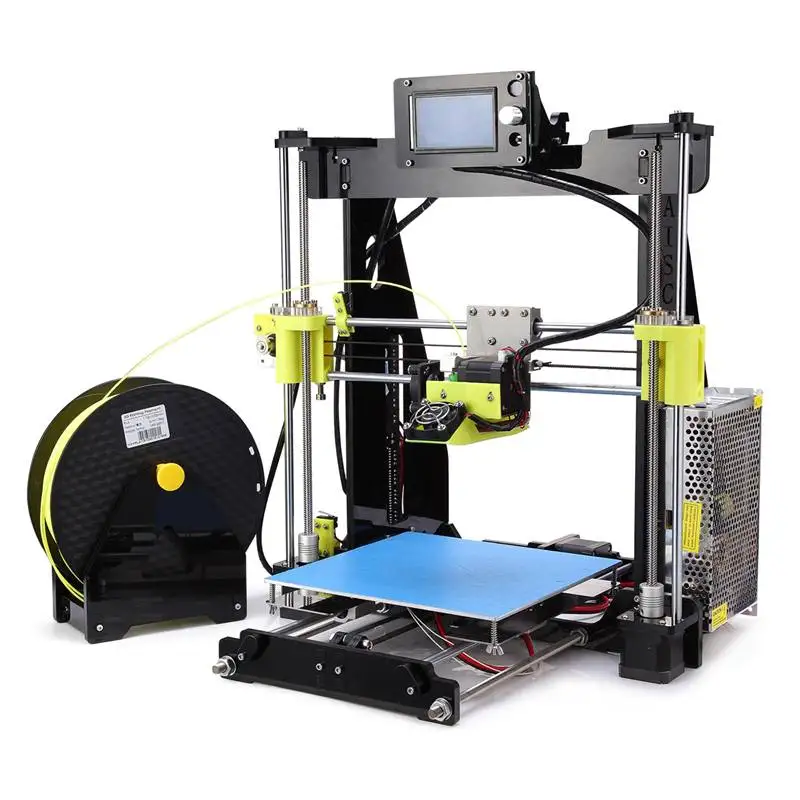Structured light 3d scanners
Laser Scanner vs Structured Light Scanner: which should you choose?
3D printing news News Laser Scanner vs Structured Light Scanner: which should you choose?
Published on August 8, 2019 by Carlota V.
In the 3D printing workflow, 3D scanners are very often an essential step to facilitate the modeling of an object. They make it possible to collect data on the shape and sometimes depending on the 3D scanner, the appearance (such as colours). Therefore, 3D scanning enhances the design process, speeds up and reduces errors in data collection and also saves time and money.
3D scanning can be based on different technologies, each with their own benefits & limitations. In this article we explore the two main technologies used for 3D scanning for 3D printing, in other words, laser triangulation and structured light. So, how do laser scanners compare to structured light scanners? And most importantly, which one should you choose for your project?
Laser Scanners: technology, benefits and limitations
Laser scanners are based on trigonometric triangulation to accurately capture a 3D shape as millions of points. More precisely, they work by projecting a laser point or line onto an object and then capturing its reflection with sensors. Since the sensors are located at a known distance from the laser’s source, accurate point measurements can be made by calculating the reflection angle of the laser light. With the knowledge of the distance of the scanner from the object, the scanning hardware can map the surface of the object and thereby record a 3D scan.
This method is called triangulation because the laser dot (or line), the sensor and the laser emitter form a triangle as seen in the figure below. There are many different types of laser scanners on the market, you can choose between handheld, desktop or professional/industrial devices. The key is that they work within a short-range.
The benefits of the laser triangulation technology are its resolution and accuracy. When talking about accuracy, it is on the order of tens of micrometers. Also, it is possible to buy a laser 3D scanner for a very reasonable price as its design can be quite simple.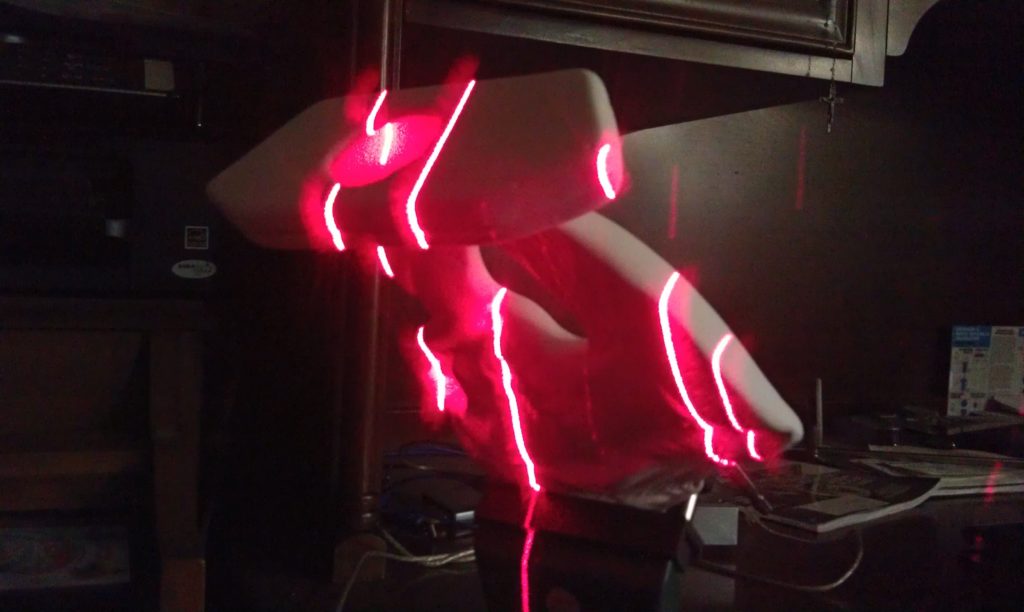
However, you should note that the properties of the surface to scan affect the scanning process. Therefore, very shiny or transparent surfaces can be quite problematic for this technology.
For example, the Matter & Form V2 (on the left) is a desktop laser 3D scanner, retailing for $749. The Go!SCAN SPARK (on the right) from Creaform is a professional handheld laser 3D scanner with a starting price around $30,000.
Structured Light Scanners: technology, benefits and limitations
Today many handheld 3D scanners for 3D printing use structured light technology. This technology also uses trigonometric triangulation but works by projecting a pattern of light onto the object to scan and not a laser line (or dot). The pattern is projected on the object using an LCD projector or some other source of stable light. One or more sensors (or cameras), slightly offset from the projector, look at the shape of the pattern of light and calculate the distance of every point in the field of view.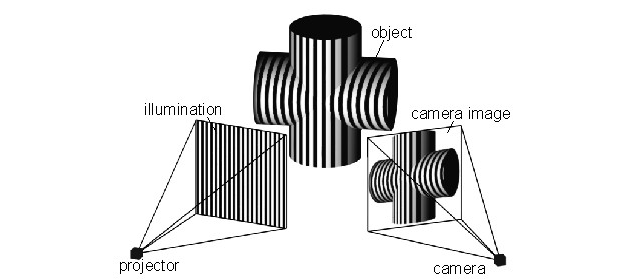 The structured light used in the scanning process can be white or blue and the pattern of light usually consists of a series of stripes, but can also consist of a matrix of dots or other shapes.
The structured light used in the scanning process can be white or blue and the pattern of light usually consists of a series of stripes, but can also consist of a matrix of dots or other shapes.
This type of device just as the laser scanner works on short ranges and can be handheld or mounted on a tripod.
The benefit of structured light technology is how fast scans are. A scan can be achieved in about 2 seconds and the scanning area is also quite large. Just like laser scanners, structured light scanners are extremely accurate and offer a high resolution.
One of the downsides of this type of scanner is that they are sensitive to the lighting conditions in a given environment. This is less true of laser scanners. For example, working outside would be extremely difficult.
For example, the Structured Light Pro S3 (on the left) from HP is a mounted on tripod device, retailing at around $4,390 (3,930€). The EinScan Pro 2X (top) from Shining3D is a professional handheld structured light device, costing around $6,899 and the Scanner 2. 0 (bottom) from XYZprinting is also a handheld device for beginners that costs $256 (226€).
0 (bottom) from XYZprinting is also a handheld device for beginners that costs $256 (226€).
Other Technologies
In the case of the two technologies described above, they are meant for short range 3D scanning. When you need to scan an object from a distance, you will find yourself limited. We will mention two more technologies designed to work for medium to long range 3D scanning.
3D scanning using structured light technology
Time-of-flight 3D scanners use laser pulse technology. Just like laser scanners they use lasers to accurately scan a 3D object, however, the technology works completely differently. It works by knowing the speed of the laser light perfectly, then the system measures the length of time the laser takes to reach an object and reflect back to its sensor.
Another type of time-of-flight 3D scanner uses phase-shift systems. This technique works the same as laser pulse technology, but also modulates the power of the laser beam. The scanner compares the phase of the laser sent out and returned to the sensor. This allows it to be more accurate than a laser pulse 3D scanner but not as flexible for long range scanning.
This allows it to be more accurate than a laser pulse 3D scanner but not as flexible for long range scanning.
Time-of-flight 3D scanners are definitely not as accurate as laser scanners or structured light scanners, however if you are looking to scan a large object, let’s say a building, you will mostly likely use this sort of technology.
3D scanning using laser triangulation technology
Was this helpful to choose your which technology you should choose? Let us know in a comment below, or on our Facebook and Twitter pages! Sign up for our free weekly Newsletter, all the latest news in 3D printing straight to your inbox!
What Is Structured Light Scanning?
In recent decades, one of the biggest advances in manufacturing technology has been the development and rise of 3D scanning techniques. Finding ways to accurately map complex 3D objects was long a holy grail for many scientists and engineers, but seemed impossible before the development of sophisticated camera technology and computer processing hardware.
Now, even DIY hobbyists can create amateur 3D scanning systems using basic consumer hardware like the Xbox Kinect, while the micro-manufacturing and medical sectors have been transformed by professional-grade setups.
Particularly in dentistry, structured light scanning is now an invaluable tool for manufacturing dental implants and other orthodontic devices, and lets medical professionals scan the precise dimensions of any structure in their patients’ mouths.
The History of Structured Light ScanningThe building blocks for structured light scanning have been around for millennia, as Egyptian and Babylonian mathematicians began using triangulation to calculate physical dimensions more than 5,000 years ago. But it wasn't until the late 19th century that the development of the first advanced cameras laid the foundation for modern structured light scanning.
it wasn't until the late 19th century that the development of the first advanced cameras laid the foundation for modern structured light scanning.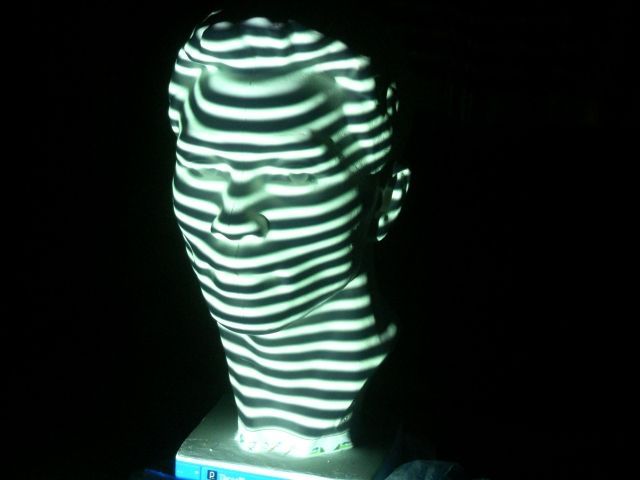
The crucial realization for scientists was that cameras represent more than simple images. Instead, they are actually collecting and displaying visual data itself. While researchers experimented with the possibilities afforded by new camera technology, they had to wait until the silicon revolution overtook the computer industry in the 1970s to begin developing true 3D scanning techniques.
Today, structured light scanning is an incredibly versatile tool for research and manufacturing
The earliest structured light scanners were crude, expensive and difficult to use. As such, they stayed relegated to industrial applications. However, as camera and computer technology rapidly improved, techniques iterated quickly and began yielding modern structured scanning equipment by the late 90s.
Today, structured light scanning is an incredibly versatile tool for research and manufacturing, and has seen use in everything from the development of NASA spacecraft to detailed analysis of antique artifacts — and, of course, dentistry.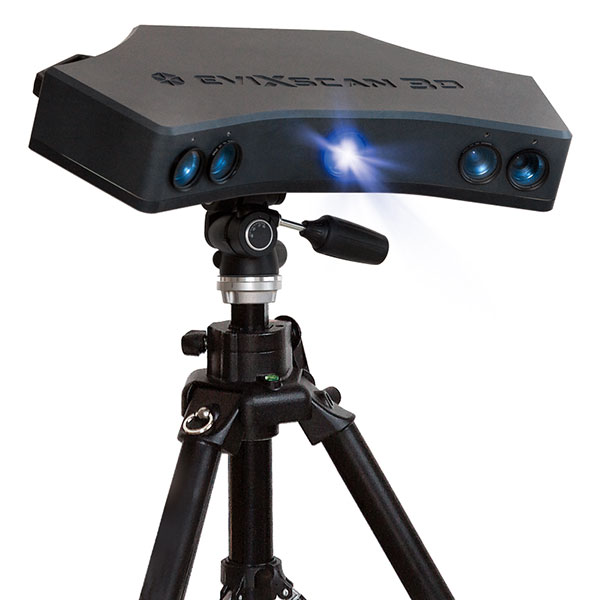
The basic function of a structured light scanner is simple: you project a structured light pattern onto an object, then film it with at least one camera (usually two cameras) to capture the ways in which the object deforms the light pattern. By triangulating multiple images of the scan, you can calculate the dimensions of the object in all its complexity.
Most scanners use a pattern of alternating stripes, similar to the shadows cast by sunlight shining through Venetian blinds. With finely calibrated stripes and accurate cameras, it’s possible to measure the dimensions of very small details — even the minute variations in the surface of a tooth or oral socket.
By processing the resulting data in scanning software, you’re able to create a digitized 3D image of the scanned object, which can be used to design dental prosthesis or accurately map the dimensions of the scanned target location.
Structured light scanning is often used as an alternative to 3D laser scanning, due to the tendency for lasers to get easily disrupted by reflective surfaces, any form of transparency and even the complex interference patterns in laser light itself.
blue light projected from sophisticated LEDs has become the new standard
In earlier days, white light was preferred for structured light scanning, but today blue light projected from sophisticated LEDs has become the new standard, thanks to its increased accuracy and higher resistance to disruptive forces like reflections, or even the slight transparency of living flesh.
Medit provides a variety of structured light systems that can help your practice manufacture precise and accurate dental devices. Contact us today to learn how structured light scanning can help improve patient outcomes in your office.
or
Structured Light Digitization vs. 3D Handheld Laser Scanning
With the continuous development of technology, the 3D scanning market boasts a wide variety of brands, device categories and price ranges. Today we will take a detailed look at the key selection criteria for an industrial 3D scanner and provide information on the characteristics and applications of various types of metrology systems.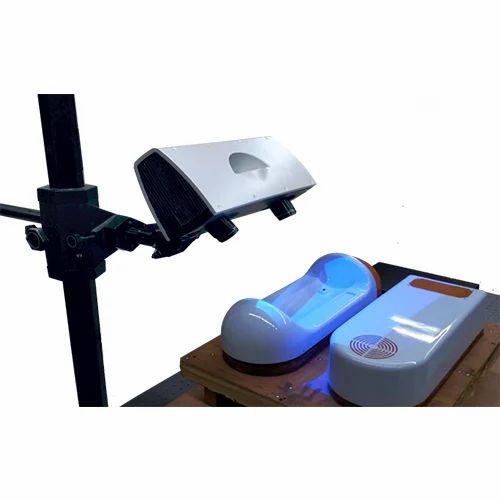
3D metrology scanner selection criteria
When evaluating the capabilities of various 3D scanning devices, the following points play the most important role:
User side:
- requirements for data quality, accuracy and detail;
- usage scenarios, size of scanned objects, textures and digitization time;
- budget.
From the manufacturer:
- user reviews;
- brand and services offered;
- software and updates.
Let's compare two examples of 3D scanning systems in our range:
OptimScan 3D Metrology Scanner with Blue LED Structured Illumination
The OptimScan system is designed to digitize relatively small objects with high precision and detail: cast and forged parts, molding and foundry tooling, plastic components, fine detail products, and the like. It can be used in conjunction with collaborative robotic arms, for example, for digitizing large objects - car bodies, stamped parts, and so on. Applications include automotive and transportation, electronics, molding and foundry tooling, aerospace, and others.
Applications include automotive and transportation, electronics, molding and foundry tooling, aerospace, and others.
FreeScan UE Handheld 3D Laser Scanner
The FreeScan UE 3D Scanner lets you capture medium to large objects, as well as work with dark and reflective surfaces. Examples include casting dies, clay models, automobile bodies, aircraft engines, large blades and vanes, and the like. Applications include automotive, rail, energy, construction and others.
Structured Illumination 3D Scanners: Precision and Detail
High-precision systems based on structured LED illumination technology and handheld 3D laser scanners form a point cloud in different ways. The former build the cloud in separate solid frames, while the latter generate a cloud by combining and merging frames with a partial display of the object.
Structured light 3D scanning features:
- stable accuracy of the metrological level, in the case of 3D scanners of the OptimScan line, reaching 0.
 005 mm;
005 mm; - good detail.
Level of detail when digitizing with the OptimScan 3D scanner
3D handheld laser scanners: compact and versatile
Handheld 3D scanners offer advantages in terms of compactness and the ability to adapt to a wide range of materials through the use of laser emitters:
- handheld 3D laser scanners are flexible, easy to use and fast: the FreeScan UE 3D scanner weighs only 750 grams, and it takes about ten minutes to digitize a car;
- wide range of material compatibility: dark and reflective surfaces can be digitized without the need for frosting sprays;
- high precision, in the case of FreeScan UE up to 0.02 mm with high repeatability.
Key points for choosing between two types of metrology 3D scanners
The main thing to pay attention to is data quality requirements and working conditions.
For high quality and detail requirements, we recommend using 3D scanners with structured illumination technology. Examples:
Examples:
3D scanning of small objects with high precision and detail
3D scanning on the production line with the required accuracy in the range of 0.005-0.015 mm
If compactness and versatility are in the foreground, handheld 3D scanners are worth using. Examples:
3D scanning of stationary, bulky, non-separable objects
3D scanning of dark and/or reflective surfaces without matting spray option
In general, structured light 3D scanning is best suited when there are strict requirements for accuracy and detail. When working with dark and reflective surfaces, matting sprays can be used. Handheld 3D laser scanners, on the other hand, are well suited for working in tight spaces and are highly compatible with various types of surfaces.
There is a misconception that 3D scanning systems based on structured illumination technology are not versatile enough and have too low performance.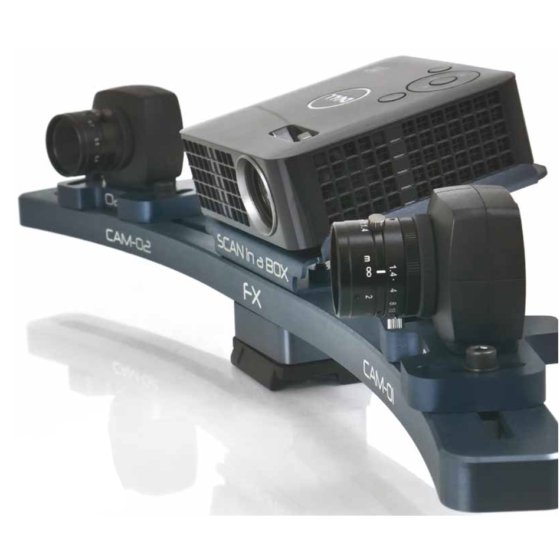 In fact, these 3D scanners demonstrate high capture speeds and good repeatability, especially when scanning objects on turntables, working with complex geometries, and even in cases where repeatability control of production batches is required.
In fact, these 3D scanners demonstrate high capture speeds and good repeatability, especially when scanning objects on turntables, working with complex geometries, and even in cases where repeatability control of production batches is required.
For example, digitizing an 8 cm impeller pump using a turntable takes only about one minute.
In addition, high-precision structured light 3D scanning systems are very effective in conjunction with collaborative multi-axis robotic arms and coordinate measuring machines with automatic data processing.
3D inspection of the F-35 fighter assembly line
3D metrology scanner applications
3D scanning with structured LED illumination
Example #1: 3D scan of the bottom of the optical modem case
Example #2: 3D scanning of mobile phone components
Example #3: Digitizing thin walls with a minimum thickness of 0. 16 mm
16 mm
Example #4: Digitizing a 6 mm part
Example #5: Digitizing a form with the required accuracy of 0.03 mm
Handheld 3D scanner applications
Example #1: 3D scan of an aircraft engine
Example #2: 3D scanning of cast metal parts
Example #3: 3D scan of a reflective mold die
Conclusion
We hope that we have been able to provide useful information for the selection of the most suitable equipment. To summarize:
- For precision 3D scanning of small to medium-sized parts, use 3D inspection scanners with structured LED technology;
- For medium to large parts, choose handheld 3D laser scanners;
- Many users with high requirements for measurement control prefer to keep both structured light scanning systems and 3D laser scanners on hand, using one or the other depending on the task at hand, thereby increasing the overall efficiency of design and manufacturing processes.
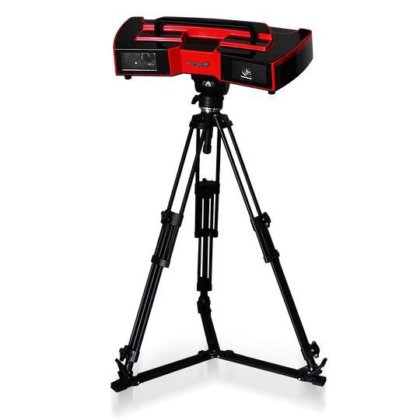
If you are interested in industrial grade 3D scanning systems and need further advice, please contact us and we will help you select the most suitable equipment.
Detailed information on 's offerings under the Shining 3D brand is available on our website.
3D laser scanning - definition, characteristics
Your city: Moscow
Right?
× Choose the city closest to you:
Moscow St. Petersburg Vladivostok Novosibirsk Yekaterinburg Kazan Nizhny Novgorod Chelyabinsk Omsk Rostov-on-Don Samara Krasnoyarsk Voronezh Perm
Volgograd Krasnodar Saratov Tyumen Tolyatti Izhevsk Barnaul Ulyanovsk Irkutsk Khabarovsk Makhachkala Yaroslavl
▼ Show more
Deselect
3D scanning is a technique used to capture the shape of an object with a 3D scanner. The result is a 3D object file that can be saved, edited, and even printed in 3D.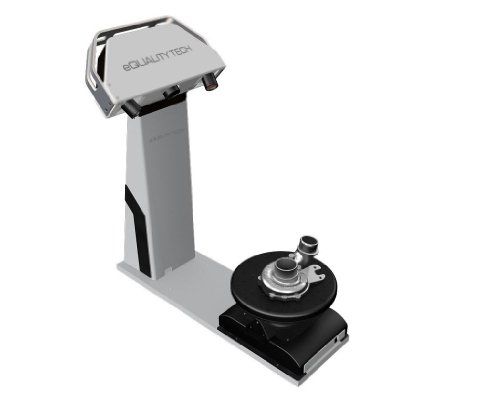 Some 3D scanners can collect shape and color data at the same time. 3D scanning is compatible with computer-aided design (CAD) software, as well as 3D printing after a little training in the relevant programs.
Some 3D scanners can collect shape and color data at the same time. 3D scanning is compatible with computer-aided design (CAD) software, as well as 3D printing after a little training in the relevant programs.
3D scanning technologies:
- Photogrammetry – 3D modeling from photographs. The principle of photogrammetry is to analyze several photographs of a static object taken from different viewpoints and automatically detect pixels corresponding to the same physical point. The input required from the user is camera parameters such as focal length and lens distortion. Photogrammetric technology is also capable of reconstructing objects of various scales photographed from the ground or from the air. The main advantages of 3D photogrammetry scanning technology are its accuracy and speed of data collection.
- Structured Light 3D Scan - Structured Light 3D Scan technology works by projecting a series of linear patterns onto an object.
 The system is then able to examine the edges of each line in the pattern and calculate the distance from the scanner to the surface of the object. The structured light used for 3D scanning can be white or blue and is generated by numerous types of projectors such as digital light processing (DLP) technology. The projected pattern is usually a series of light rays, but can also be a random dot matrix. The main advantages of structured light technology for 3D scanning are speed, resolution and the ability to 3D scan people.
The system is then able to examine the edges of each line in the pattern and calculate the distance from the scanner to the surface of the object. The structured light used for 3D scanning can be white or blue and is generated by numerous types of projectors such as digital light processing (DLP) technology. The projected pattern is usually a series of light rays, but can also be a random dot matrix. The main advantages of structured light technology for 3D scanning are speed, resolution and the ability to 3D scan people. - 3D Laser Triangulation Scanning Technology – Laser triangulation based 3D scanners use either a laser line or a single laser dot to scan an object. Using this method, digitization begins with the emission of a rectilinear laser beam, which deforms upon contact with the object. Using a camera, the 3D scanner analyzes the deformation of the line emitted by the laser on the reliefs of the object in order to determine its position in space using trigonometric calculations.
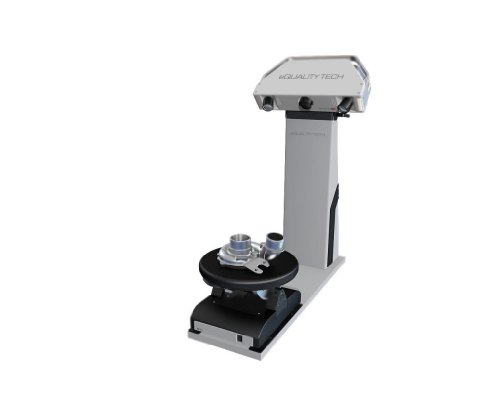 The angle formed between the camera and the laser beam, the distance from the camera to the object, and the distance from the laser source to the object (known from the calculation of the time it takes the laser to go around) are parameters. which allow you to determine the spatial coordinates of the object. The advantages of laser triangulation technology for 3D scanning are resolution and accuracy.
The angle formed between the camera and the laser beam, the distance from the camera to the object, and the distance from the laser source to the object (known from the calculation of the time it takes the laser to go around) are parameters. which allow you to determine the spatial coordinates of the object. The advantages of laser triangulation technology for 3D scanning are resolution and accuracy. - Laser pulse based 3D scanning technology is a 3D scanning technology based on calculating the time it takes for a laser to reach the surface and return. Each measurement made by a 3D scanner reports a point on a surface, and the operation must be performed hundreds of thousands of times over the entire surface. This 3D scanning technology includes laser pulsed 3D scanners and phase shift 3D scanners. They, in addition to modulating the amplitude of the laser beam used for 3D scanning, also modulate its phase. These systems offer superior performance by combining the two types of modulation.
 Advantages of pulsed laser 3D scanners: the ability to scan large objects and the environment.
Advantages of pulsed laser 3D scanners: the ability to scan large objects and the environment. - 3D Contact Scan uses contact between a probe and an object to reveal surface information measured by probe deformation. This is done using a touch probe, also called a probe or probe, connected to a 3D scanner. The probe is usually connected to a structure (for example, a robotic arm) capable of registering its deformations. The main advantages of contact technology for 3D scanning are its accuracy and the ability to 3D scan transparent or reflective surfaces.
Recommended equipment
- 3D equipment
- Accessories
3D equipment
Accessories
Application for 3D scanning
I have read the Privacy Policy and agree to the processing of my personal data.
Service request
I have read the Privacy Policy and agree to the processing of my personal data.





